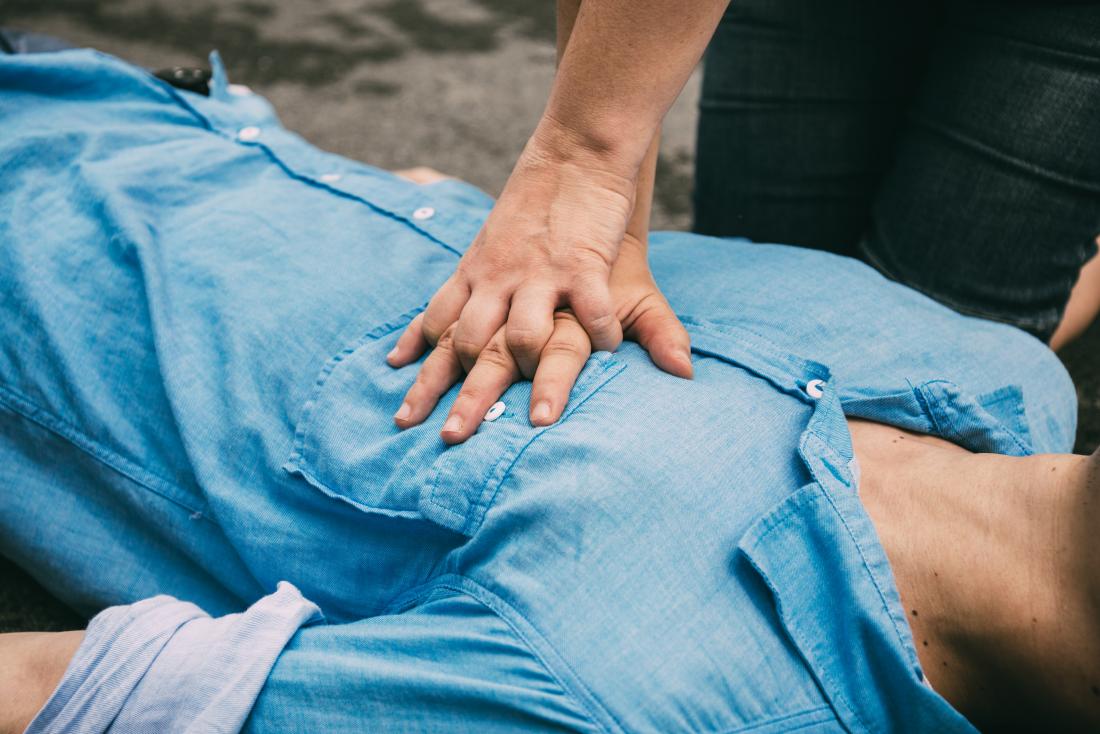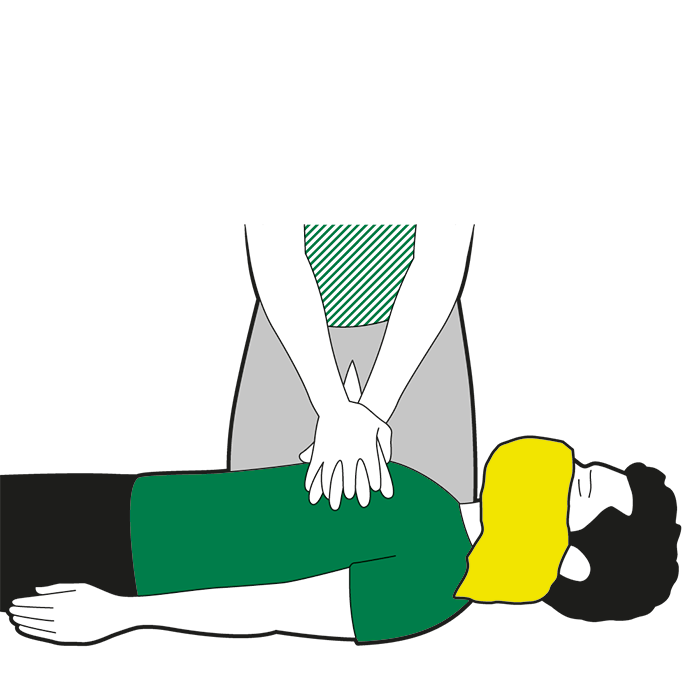Some Ideas on Clinic Near Me You Should Know
Wiki Article
Clinic Near Me - An Overview
Table of ContentsThe smart Trick of Urgent Care Hours That Nobody is Talking AboutSome Known Questions About Immediate Care.About Minute ClinicEverything about Minute Clinic3 Easy Facts About Minute Clinic Shown
Check to see if the individual is conscious as well as breathing generally. One individual calls 911 and then obtains an AED, while the various other individual looks for no breathing or only gasping and also (simultaneously) checks for a Precise pulse WITHIN 10 SECONDS.Recheck the pulse every 2 mins. 3d. If no pulse or regular breathing, begin CPR. The initial rescuer performs cycles of 30 compressions and 2 breaths. When the 2nd rescuer returns, the 2 perform cycles of 15 compressions and 2 breaths. Utilize the AED as quickly as it is offered.
Unlike BLS, PALS generally entails a worked with group of experienced responders who are able to launch several processes all at once.: Call for assistance as well as turn on the emergency feedback Initiate top quality Mouth-to-mouth resuscitation as well as give oxygen Connect an ECG screen and defibrillator pads Establish vascular gain access to; initially, trying peripheral IV access is acceptable yet only for a brief, minimal time; if an outer IV gain access to can not be quickly developed, then an IO line should be put by a trained service provider Once the youngster is attached to the monitor or AED, the rhythm should be assessed and established to be shockable or nonshockable.
Tachyarrhythmia One of the most common kinds of tachycardia in the pediatric populace are sinus tachycardia, supraventricular tachycardia, and ventricular tachycardia. As with other elements of friends, an algorithmic strategy is utilized for tachyarrhythmia, as described listed below. If a pediatric person is discovered to be less competent and not breathing in the context of tachycardia on the screen, then continue to the pulseless arrest algorithm.
The Greatest Guide To Urgent Care
Breathing and also heart apprehension can be brought on by allergies, an ineffective heartbeat, asphyxiation, breathing flows that are obstructed, choking, sinking, medicine reactions or overdoses, electrical shock, exposure to cool, serious shock, or trauma. Mouth-to-mouth resuscitation can be done by qualified onlookers or healthcare specialists on babies, kids, and grownups. It ought to always be performed by the person on the scene who is most experienced in CPR.Precautions, mouth-to-mouth resuscitation ought to never be done on a healthy and balanced person due to the fact that it can cause severe injury to a pounding heart by disrupting typical heartbeats.To give oxygen to a person's lungs, the rescuer carries out mouth-to-mouth breaths, then helps flow blood via the heart to important body organs by external chest compressions. Mouth-to-mouth breathing and outside upper body compression ought to be carried out together, but if the rescuer is not solid sufficient to do both, the outside upper body compressions must be done. urgent care clinic.
Nevertheless, numerous CPR efforts are not inevitably effective in restoring an individual to a good quality of life. Usually, there is brain damages even if the heart starts defeating once more. CPR is for that reason not generally suggested for the persistantly or terminally sick or frail elderly. For these people, it represents a terrible and not a serene end of life.
A hand-held tool called a mouth-to-mouth resuscitation Prompt is available to stroll individuals learnt CPR with the procedure, making use of American Heart Association standards. Mouth-to-mouth resuscitation has actually been exercised for more than 40 years. The basic treatment for mouth-to-mouth resuscitation coincides for all individuals, with a couple of modifications for infants as well as youngsters to represent their smaller sized size.
The smart Trick of Emergency Room That Nobody is Talking About
After 2 breaths, the rescuer checks the subconscious person's pulse by moving the hand that was under the person's chin to the artery in the neck (carotid artery). If the subconscious person has a heart beat, the rescuer continues rescue breathing up until aid gets here or the person begins breathing without help.If there is no heartbeat, the rescuer executes breast compressions. The rescuer kneels beside the unconscious individual, positioning the heel of one hand in the area on the reduced chest where the 2 halves of the rib cage come together. The rescuer places one hand on top of the other on the person's chest and interlaces the fingers.
The hands are pushed down, using only the hands, to make sure that the person's breastbone sinks in concerning 1 1/2 -2 inches. The rescuer releases pressure without getting rid of the hands, then repeats regarding 15 times per 10-15 second intervals. The rescuer turns the subconscious person's head as well as returns to rescue breathing for one or 2 quick view it breaths.
If the rescuer finds indications of a heartbeat and breathing, CPR is stopped. If the unconscious individual is taking a breath but has no pulse, the breast compressions are continued. If the subconscious person has a pulse however is not breathing, rescue breathing is proceeded. For youngsters over the age of 8, the rescuer executes mouth-to-mouth resuscitation precisely as for an adult.
The 6-Minute Rule for Immediate Care

The breastbone is dispirited only 1-1 1/2 inch for a kid and also 1/2 -1 inch for an infant, the rescuer provides at the very least 100 chest compressions per min. Some new ways of executing mouth-to-mouth resuscitation have actually been attempted. Active compression-decompression resuscitation, stomach compression done in between upper body compressions, as well as upper body compression making use of a pneumatic vest have actually all been evaluated however none are presently advised for regular use.
Interposed abdominal counterpulsation, which requires 2 or more rescuers, one compressing the breast and also the other compressing the abdominal area, was created to boost pressure and also therefore blood flow. It has been shown in a small research study to boost survival but even more information is required. A pneumatically-driven vest, which circles around the chest of a subconscious person as well as presses it, raises pressure within the upper body during external upper body compression.
If no signs of breathing exist after 3 to 5 seconds, CPR must be started. Aftercare, Emergency treatment is always necessary after successful mouth-to-mouth resuscitation. Once a person's breathing and heart beat have been brought back, the rescuer needs to make the person comfy as well as stay there until emergency medical workers arrive.
A Biased View of Urgent Care Clinic
Dangers, CPR can create injury to an individual's ribs, liver, lungs, and also heart. Nevertheless, these dangers should be approved if mouth-to-mouth resuscitation is essential to conserve the individual's life. Normal outcomes, In numerous situations, successful CPR leads to remediation of awareness as well as life. Disallowing other injuries, walk in doctors near me a revitalized person usually goes back to typical features within a couple of hours of being revived.
Report this wiki page